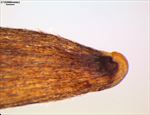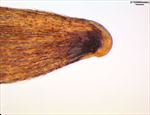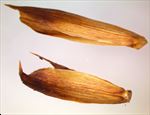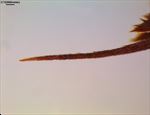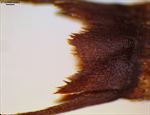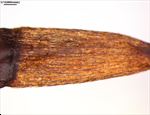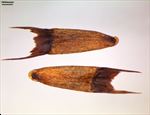Taxonomy
Tithonia diversifolia (Hemsl.) A.Gray, Proc. Amer. Acad. Arts 19:5. 1883
Common synonyms
Helianthus quinquelobus Sessé & Moc.; Mirasolia diversifolia Hemsl.; Tithonia diversifolia subsp. diversifolia; Tithonia diversifolia var. diversifolia; Tithonia diversifolia var. glabriuscula S.F.Blake; Tithonia triloba Sch.Bip.; Tithonia triloba Sch.Bip. ex Klatt; Urbanisol tagetiflora f. grandiflorus Kuntze; Urbanisol tagetiflora var. diversifolius (Hemsl.) Kuntze; Urbanisol tagetiflora var. flavus Kuntze; Urbanisol tagetifolius f. grandiflorus Kuntze; Urbanisol tagetifolius var. diversifolius (Hemsl.) Kuntze
Common name
Japanese Sunflower
Description
Propagule or dispersal unit is the fruit with pappus or fruit with pappus and enveloping bract. Fertile part 5-7 mm long, 2-2.7 mm wide, in side view widest in upper part (obovoid), +/- straight, the upper (apical) end suddenly cut off (truncate), in cross-section flattened, basal scar (carpopodium) pronounced and well-differentiated, off to the side (oblique) or at least asymmetric, beak (=thinner sterile stalk between seed and pappus) absent, wings absent, propagule surface dark brown or black, smooth (except at cellular level), with simple straight hairs, thickened margin absent, longitudinal ribs absent.
Pappus type bristles / hairs or scales, pappus elements clearly differentiated into bristles and fused scales, up to 3-5 mm long, in one row, number of pappus elements c. four or two (by misinterpretation), persistent, the individual bristles rough / serrated (barbellate), clearly wider at base, white / translucent or brown, the individual scales dissected.
Note: The pappus generally consists of two bristles and several fused scales. The fruit may be dispersed by itself or inside a bract.
Ecology
Robust perennial herb to weak shrub. Tropical to warm-temperate regions. Sometimes planted to improve soil fertility, chicken feed, as herbal medicine, or as an ornamental. Weedy along roads, railways and watercourses, wastegrounds and in other disturbed areas, with a potential to spread into grasslands.
Native range
Mexico, Central America.
Introduced range
Florida, northern South America, tropical and southern Africa, southern Asia, Southeast Asia and Papua New Guinea, northeastern Australia, New Zealand.
